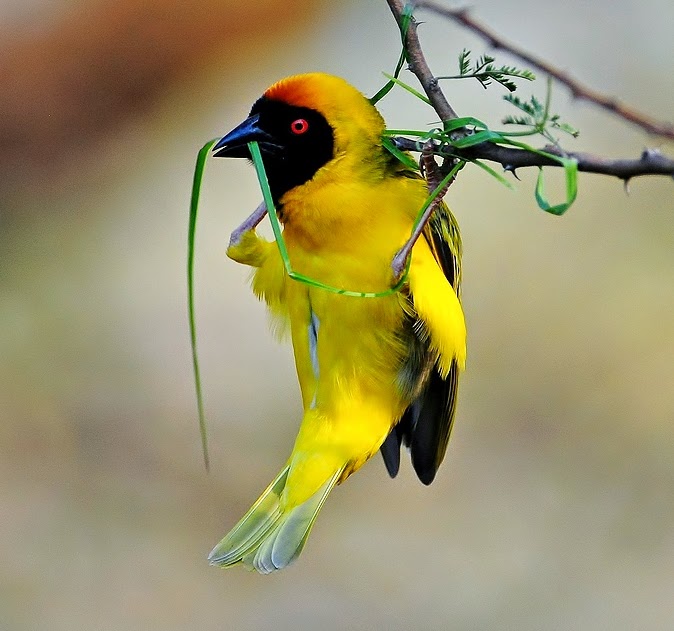 |
| Photo by Ian White (Flickr) |
Common name:
southern masked-weaver (en); tecelão-de-mascarilha (pt); tisserin à tête rousse (fr); tejedor enmascarado (es); maskenweber (de)
Taxonomy:
Order Passeriformes
Family Ploceidae
Range:
This species is found in southern Africa, from southern Angola, Zambia and Malawi south to South Africa. It has also been introduced to the island of São Tomé.
Size:
These birds are 11-15 cm long and weigh 25-35 g.
Habitat:
The southern masked-weaver is found in semi-arid scrublands and open savannas, edges of dry tropical forests, riverine thickets, pastures and arable land with scattered trees, plantations, rural gardens and urban areas.
Diet:
They feed on seeds of grasses and other plants, fruits, flowers and nectar, as well as adult and larval insects, and human scraps.
Breeding:
Southern masked-weavers breed in July-April. They are polygynous, with males building nests to attract females and then mating with up to 12 females in a single breeding season. They nest in colonies of up to 9 males, and each nest is a kidney-shaped structure with a large entrance on the bottom, made of woven grass, palm leaves or reeds with a ceiling of leaves. It is placed hanging from a tree, reed or even a barbed wire fence. If a female accepts the nest she will line it with leaves, grass inflorescences and feathers, and lay 2-4 eggs that can have various colour to evade parasitisation by cuckoos. The female incubates the eggs alone for 12-14 days and then feeds the chicks alone until they fledge 15-17 days after hatching. Each female can raise multiple broods per season.
Conservation:
IUCN status – LC (Least Concern)
This species has a very large breeding range and is described as common to abundant in most of this range. The population is suspected to be stable in the absence of evidence for any declines or substantial threats. In fact, they adapted well to the introduction of man-made habitats, using Eucalyptus and other alien trees in areas which were previously barren, such as the Namib desert.







